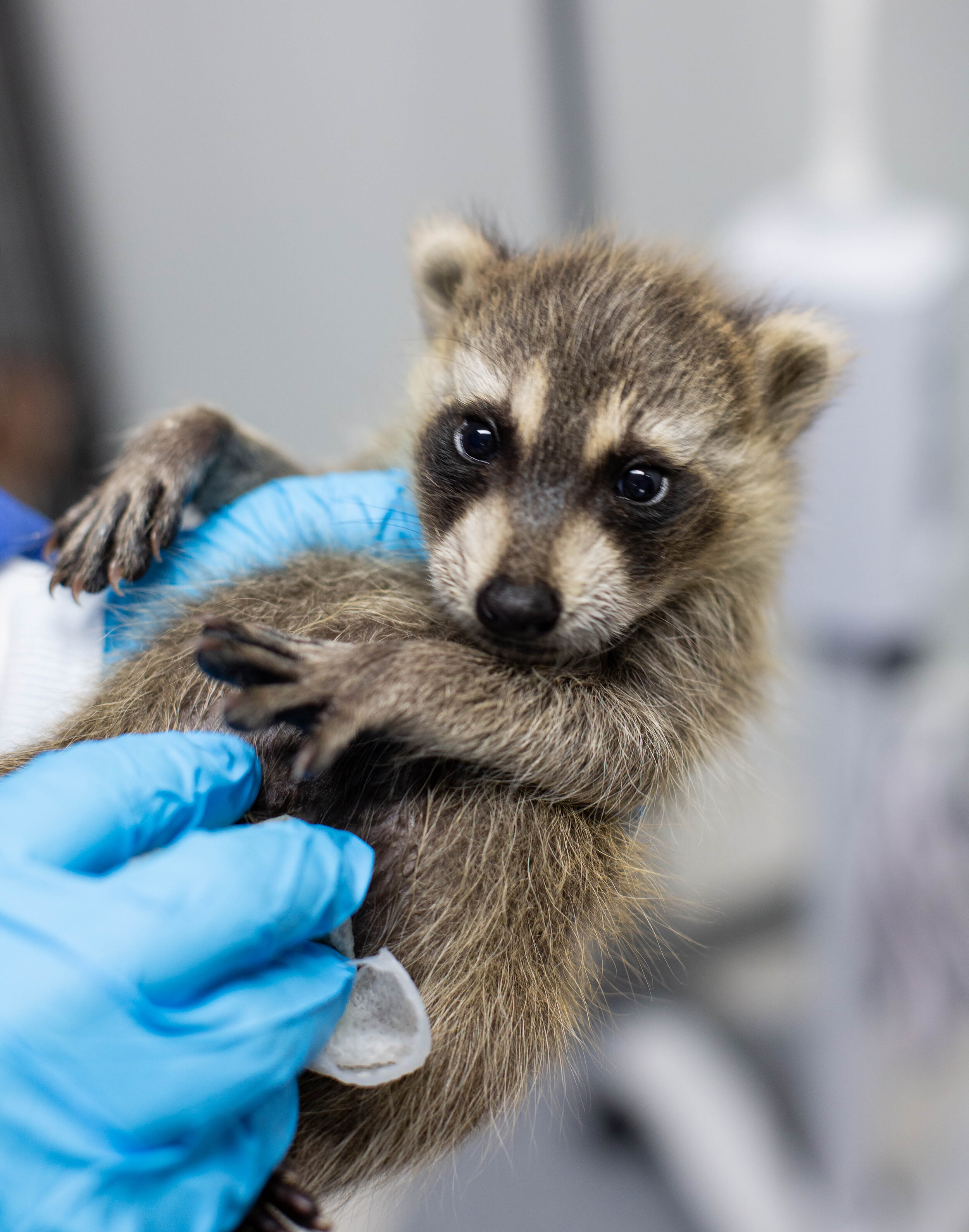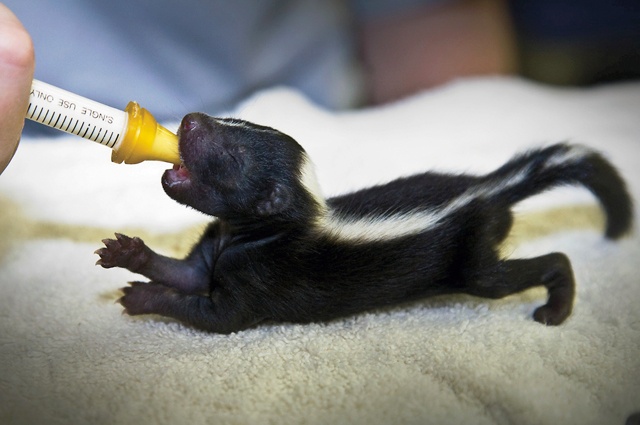The Role of Burlington Wildlife Rescue in Supporting Endangered Species
Wiki Article
The Duty of Humane Wildlife Removal in Protecting Local Ecosystems
Humane wildlife elimination is not merely an ethical factor to consider however a critical element in guarding local ecological communities. By focusing on non-lethal approaches, it resolves the delicate balance between human development and wild animals habitat preservation. This strategy not only mitigates conflicts however likewise makes certain the sustainability of biodiversity. Yet, the performance of these methods warrants additionally examination, specifically in metropolitan setups where human-wildlife communications are increasingly complicated. As we ponder the implications of our methods and their influence on eco-friendly harmony, one need to wonder about how these methods can be enhanced to foster a much more cooperative relationship with nature.Recognizing Human-Wildlife Disputes
Human-wildlife conflicts usually arise when the natural environments of animals converge with human activities, causing competitors for resources and space. As urbanization and agricultural growth proceed to trespass upon wild animals areas, animals such as raccoons, deer, and prairie wolves find themselves in closer proximity to human populations. This closeness can result in damaging influences on both wildlife and humans, as animals may create damages to crops, framework, and personal effects while people may accidentally damage wild animals through habitat devastation and various other anthropogenic pressures.The intricacy of these disputes stems from a variety of elements. Adjustments in land use, climate modification, and the fragmentation of ecosystems frequently require wild animals to adapt to new atmospheres, sometimes leading them right into business or residential areas. In addition, the availability of human-generated food resources, such as rubbish and family pet food, can draw in wild animals to human settlements, exacerbating communications and possible problems.
Resolving human-wildlife disputes requires a nuanced understanding of pet behavior, eco-friendly dynamics, and socio-economic considerations. By researching these policymakers, conservationists and interactions can create approaches that aim to alleviate disputes while protecting biodiversity and preserving environmental equilibrium. The goal is to foster coexistence and minimize negative effect on both human neighborhoods and wild animals populations.
Importance of Non-Lethal Methods
Reducing human-wildlife problems requires approaches that prioritize the well-being of both people and pets. Non-lethal approaches of wildlife removal symbolize this principles by supplying options that stop damage to wild animals while dealing with human issues. These methods consist of exemption methods, habitat alteration, and making use of deterrents to dissuade wildlife from going into human settings (animal control Burlington). By employing such techniques, we can take care of wildlife communications without turning to deadly actions, therefore maintaining animal populations and decreasing honest issues related to killing.Non-lethal approaches are critical in keeping eco-friendly balance. They ensure that types remain to fulfill their roles within environments, such as regulating pest populations or pollinating plants. These techniques often show a lot more efficient in the long term, as eliminating private pets can create a void that is promptly filled up by various other members of the types or different types altogether. This can bring about a cycle of ongoing elimination initiatives, whereas non-lethal deterrents resolve the origin causes of wild animals existence.
Furthermore, non-lethal methods foster conjunction by enlightening the general public regarding wildlife habits and motivating unified living practices. This understanding can lead to extra lasting human-wildlife communications, eventually securing both area rate of interests and pet well-being.
Benefits for Biodiversity
When non-lethal wild animals elimination methods are utilized, they add significantly to biodiversity conservation. By making certain the safe relocation of pets rather than their obliteration, these techniques keep environmental balance and secure the stability of communities.
Additionally, these methods cultivate conjunction between human beings and wildlife, reducing adverse interactions and preserving the abundant tapestry of life that characterizes biodiverse areas. This method encourages a much deeper understanding and respect for wild animals, fostering area assistance for preservation efforts. Ultimately, gentle wildlife elimination is a crucial element in safeguarding biodiversity, making sure communities stay functional and vivid for future generations.
Techniques for Reliable Removal
Applying effective methods for humane wildlife elimination requires a thorough understanding of animal actions and habitat requirements. This knowledge works as the read what he said structure for developing techniques that ensure the honest and safe moving of wildlife. One key strategy involves performing comprehensive assessments of the damaged area to recognize the types present and the particular challenges they present. This analysis aids in devising tailored methods that lessen stress and anxiety and harm to the animals.An additional crucial method is using exemption strategies, which concentrate on securing access points to protect against animals from going back to structures. This technique not just addresses the prompt concern yet additionally functions as a long-lasting service, reducing future conflicts in between human beings and wild animals. The use of non-toxic deterrents and repellents can encourage animals to vacate locations willingly, matching other removal efforts.
Capture and moving need to always be a last resort, used only when animals pose a direct hazard or are unable to leave on their very own. In such instances, making use of gentle catches and ensuring the launch of pets in ideal environments are important to protecting their well-being. Cooperation with wild animals professionals and adherence to legal guidelines further boost the effectiveness of these strategies.

Promoting Conjunction in Urban Areas
Promoting coexistence in metropolitan locations needs a diverse method that balances human development with the needs of local wildlife. Urban organizers and policymakers have to incorporate environment-friendly rooms, such as parks and wild animals passages, into city layouts to give environments for native types. burlington wildlife rescue.Education and understanding projects are critical in cultivating a society of coexistence. Citizens need to recognize the value of wild animals and the duty they play in local ecosystems. Workshops and informative sessions can furnish areas with expertise on exactly how to reduce disputes, such as safeguarding trash and using gentle deterrents to avoid wildlife invasion.
Moreover, technology can play a substantial function in promoting conjunction. Making visit their website use of wild animals monitoring systems, as an example, can assist track pet motions and educate metropolitan planning choices. Partnerships in between environmental companies, local federal governments, and neighborhood teams can better strengthen these initiatives, making sure that urban development advances sustainably while valuing the ecological equilibrium.
Conclusion
Humane wildlife elimination is vital for keeping environmental equilibrium and biodiversity by employing non-lethal approaches that reduce damage to animal populaces. Recognizing human-wildlife disputes and applying techniques such as exemption methods and environment adjustment can properly manage these experiences. Such techniques support the preservation of indigenous species and their habitats, improving area involvement and awareness. Eventually, advertising conjunction in urban areas promotes a harmonious partnership in between people and the all-natural setting, guaranteeing sustainable ecological communities for future generations.As urbanization and agricultural growth proceed to elbow in upon wild animals territories, animals such as deer, view website raccoons, and coyotes discover themselves in closer distance to human populations. Non-lethal methods of wild animals elimination personify this values by supplying options that protect against injury to wild animals while attending to human issues. By utilizing such methods, we can manage wildlife interactions without resorting to lethal measures, thereby preserving animal populaces and reducing moral issues associated with killing.
Carrying out efficient approaches for gentle wildlife elimination calls for an extensive understanding of pet actions and environment demands.Humane wildlife elimination is essential for maintaining eco-friendly equilibrium and biodiversity by using non-lethal techniques that reduce harm to pet populaces.
Report this wiki page